How to Build a Data Strategy for an Enterprise?
91% of organizations believe that with the right data, they will be in a solid position to compete and succeed in its markets over the next few years. The smarter use of data gives about 12.5% of their total gross profit.
Aligning data initiatives with business goals and making them bring tangible value require a well-defined data strategy. In this article, we will uncover all business benefits from adopting a unified, tailored data strategy. Our experts will also share a step-by-step guide on how to create a data strategy for your own organization.
What Is a Data Strategy?
A data strategy is a comprehensive, long-term plan defining the technology, processes, personnel, and regulations necessary to manage an organization's data assets.
Currently, businesses need to be aligned with the pace of data landscape development and the growing amount of generated information. Yet, for data-driven decision-making, it is essential to have a well-thought-out data management and data analytics strategy. A recent Gartner survey reveals that (D&A) leaders reported that their teams effectively provide value to their organizations. More than half of data and analytics teams underperform.
78% of respondents rank corporate and organizational strategy and vision as one of the top three inputs in Data and Analytics strategy.
A data strategy outlines the long-term vision for collecting, storing, processing, and sharing information. It must be aligned with the strategic business goals to make data serve for reaching them.
The Components of Data Strategy
Historically, the primary problem for organizations dealing with data was to arrange secure, scalable storage with quick and convenient access to data resources. That was the key focus of data strategies that companies developed and adopted. However, storage is one of the many aspects of a data strategy. An enterprise data strategy should outline how an organization acquires, stores, manages, shares, and uses information.
There are five essential components of a data strategy to maintain data management across the organization effectively:
- Identify: Establishing the means to identify data, to understand the meaning of versatile information running through the organization, regardless of its structure, origin, or location. Often, companies have different terms for specific business details. The company needs to establish a clear taxonomy to avoid confusion and data losses. A data glossary and metadata are also a must for all the data to be correctly identified.
- Store: Persist data in a structure and location that supports easy, shared access and processing. A company needs a clear-cut set of methods to define how the data is stored, processed, archived for disaster recovery, and distributed through different locations (cloud, on-premises, multiple desktops).
- Provision: Enabling data to be packaged for reusing and sharing with respect for all security rules and access guidelines. It is essential to have uniformity across systems and subject areas, make data access convenient for all businesspeople requiring data, and have data consistently formatted and documented, ready for use in business processes.
- Integrate: Standardizing, combining, and moving data residing in disparate systems to provide a consistent, unified data view. Data integration activities are one of the most expensive IT activities. Centralizing them significantly reduces costs and streamlines the data use across numerous applications and departments.
- Govern: Establish, manage, and communicate policies and mechanisms for effective data usage. Data governance strategy defines rules and guidelines for individuals to share and use data across the entire data supply chain, user roles, and use cases.
While this high-level data strategy framework looks quite formal, the core goal is creating a data strategy practically aligned with the specific company needs and pain points. A balance between the strategic view and practical sense is essential. In an effective data strategy, each measure carries practical value.
Why Do Businesses Need a Well-Tailored Data Strategy?
The benefits of adopting a well-thought-out data strategy arise from the challenges it helps to solve. Making processes simpler and faster, lowering human error risks, and eliminating critical data loss or confusion make business operations stabler, cheaper, and more accurate.
One of the critical data issues for the European region is complying with so many regulations. Companies need to report compliance and perform appropriate data accounting, protection, and document flow, which requires a systematic approach.
From a business point of view, one of the key roadblocks of data management is that diversified data should be integrated and presented in a unified format to become usable and meaningful. Another challenge is the use of disparate data systems within one infrastructure. For instance, integrating some up-to-date innovative solutions within the legacy systems.
Building a data strategy creates opportunities for businesses to stay relevant and competitive and adopt innovations to enhance performance. It unlocks new value for organizations, including the following:
- Increasing operational efficiency by streamlining data management, analytics, and decision-making.
- Optimizing processes by enhanced data flows and efficient resource utilization.
- Reducing costs by minimizing data redundancy and duplication and enhancing resource allocation.
- Making better and faster decisions by providing timely, accurate and accessible data and mining meaningful insights from data analytics.
- Combating fraud by implementing real-time monitoring, advanced analytics, and stringent data security management to identify and prevent fraudulent activities.
- Improving customer experience and loyalty through personalization and data-driven interactions.
- Supporting the adoption of new business models by ensuring data quality, creating valuable offerings for customers, and enabling efficient monetization.
- Building future-proof applications, including machine learning (ML) or generative AI solutions.
Organizations that focus on data and its business value consider operationalizing dark data as a top IT priority and report a range of economic benefits:
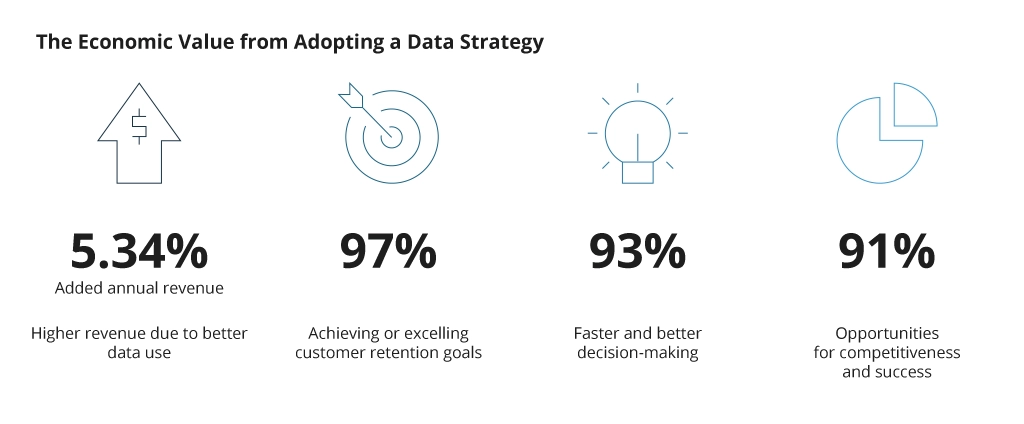
How to Approach Creating a Data Strategy for Your Organization?
Developing and executing a successful data strategy requires a deep understanding of the unique needs of the organization and careful planning. The key steps to building an organization-specific data strategy include:
- Define objectives and goals: Clearly articulate the business objectives your data strategy should support. What problems you are trying to solve or opportunities to seize.
- Define responsible roles for control and coordination of all data-related processes. Clearly defined roles facilitate coordination to prevent duplication of efforts and ensure transparent collaboration between different departments.
- Prioritize the use cases: grade the defined problems by their impact on business. Understand what use cases are more important to be solved. It will help maximize the value from available resources (if limited).
- Assess current data landscape: Take stock of existing data sources, quality, and storage systems. Understand strengths, weaknesses, and gaps in your data ecosystem.
- Enable data governance framework: Establish policies, roles, and responsibilities to ensure data quality, security, and compliance. At Infopulse, we build such based on analyzing the current state of data governance at the client’s organization to reveal the pain points and propose appropriate approaches to address them.
- Set up data collection and integration: Identify data sources to collect and integrate, considering structured and unstructured data. Plan how to capture, clean, and normalize it. In this step, we also analyze requirements for performance and the use of different data sources to address all of them in the data strategy to reduce cost and boost efficiency.
- Select data analytics and visualization tools to gain insights from the data tailored to your organization's needs.
- Ensure data access and distribution: Determine how data will be accessed and distributed within your organization using dashboards, reports, or APIs.
- Establish monitoring and continuous improvement: Implement KPIs to measure data strategy success and regularly review and adapt the strategy to changing needs and circumstances.
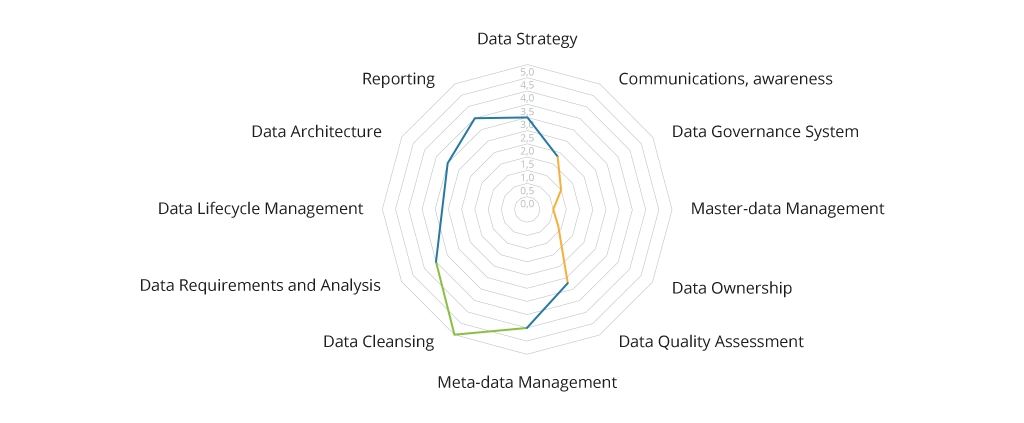
Formalizing all aspects of the data strategy framework with a further implementation roadmap requires significant time and effort. However, if designed and documented accurately, covering all critical aspects, it greatly reduces the time and budget for implementation.
Data strategies are not one-off implementations. They should be regularly reviewed and adapted to the business goals and changing data landscape.
Conclusion
A resilient data strategy is essential to cultivate a culture where data becomes a powerful driver for business growth. It aligns data initiatives with the organizational objectives and assigns clear responsibilities for coordinating all data-related processes.
To stay up-to-date and competitive in the long run, a company needs an adaptive data strategy roadmap that reflects its practical needs. Every designed measure and solution within the data strategy should be focused on driving value.
Infopulse data experts provide data strategy framework design, developing data analytics solutions, data warehouse design, data lake & big data services, and others. We help companies from agriculture, retail, finance, manufacturing, and other industries to capture all the benefits from their data through tailored data strategy with appropriate IT infrastructure transformations.

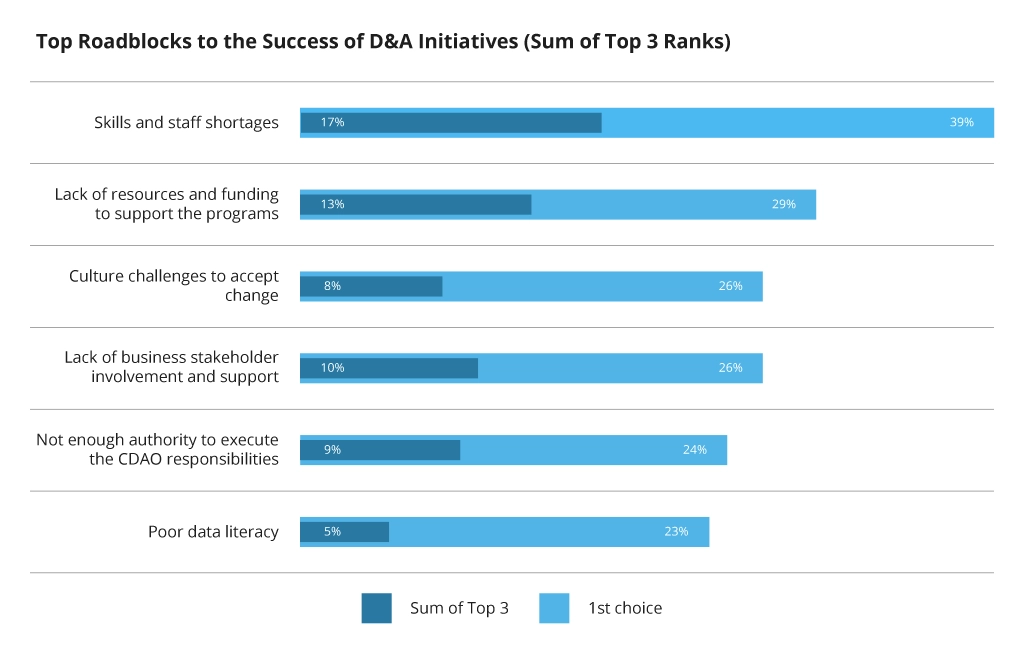

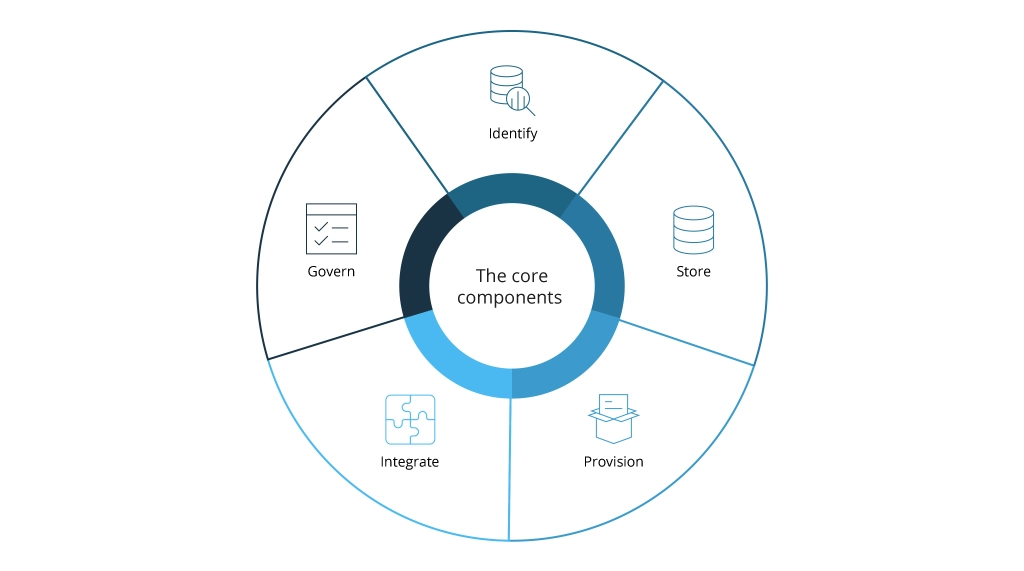
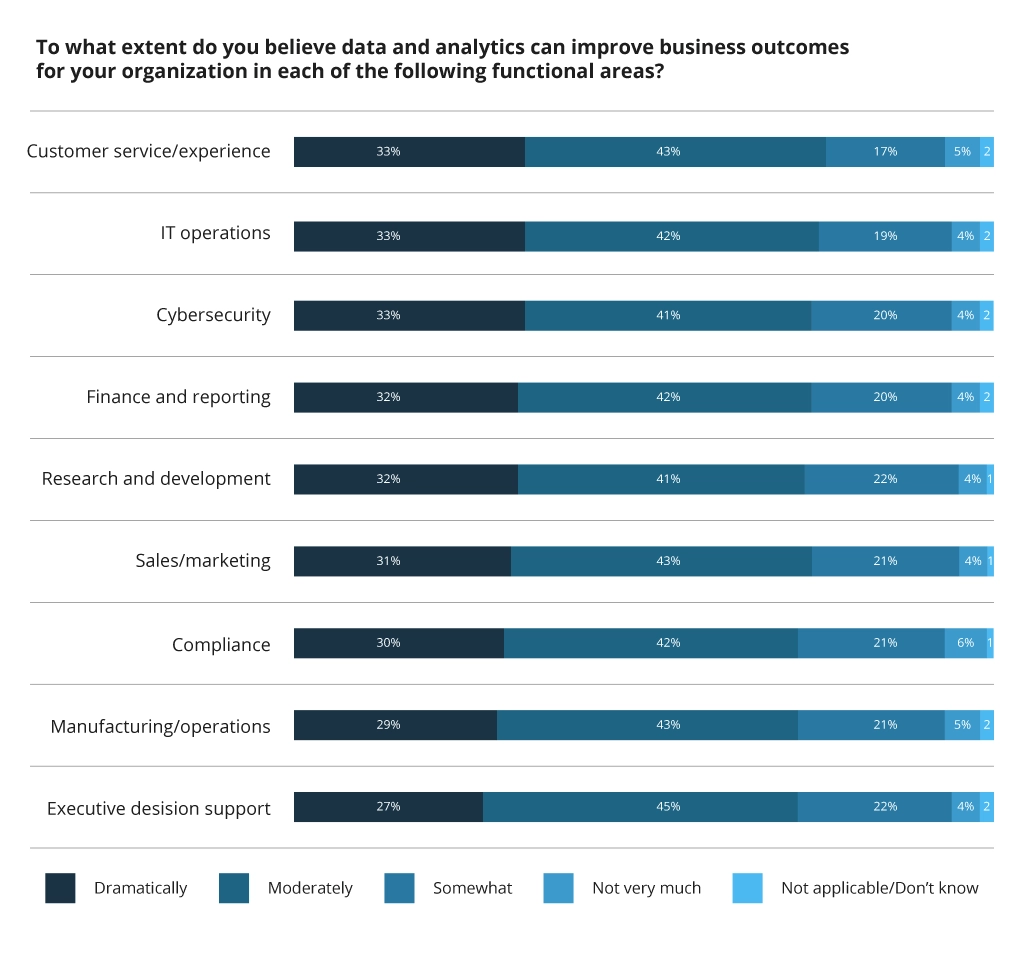


![Digital Alignment Drivers [thumbnail]](/uploads/media/thumbnail-280x222-the-top-forces-driving-digital-alignment.webp)

![Databricks Benefits and Capabilities [thumbnail]](/uploads/media/thumbnail-280x222-what-is-databricks-and-why-you-need-it.webp)
![Data Storage Security [thumbnail]](/uploads/media/thumbnail-280x222-data-storage-security.webp)
![Big Data Sources [thumbnail]](/uploads/media/thumbnail-280x222-big-data-sources.webp)
![Data Modelling Power BI [thumbnail]](/uploads/media/thumbnail-280x222-data-modelling-in-power-bi.webp)
![Microservices Devil's Advocate [thumbnail]](/uploads/media/thumbnail-280x222-a-microservices-devil's-advocate-v2.0.webp)
![AWS migration strategy [thumbnail]](/uploads/media/thumbnail-280x222-aws-migration-strategy.webp)
![Big Data Platform on AWS [thumbnail]](/uploads/media/thumbnail-280x222-aws-data-platform-20230227.webp)
![Benefits of Cloud-Agnostic Strategy [thumbnail]](/uploads/media/thumbnail-280x222-cloud-agnostic-strategy-whats-in-and-how-to-act-to-get-tangible-business-value.webp)
![Big Data Platform on Google Cloud Platform [thumbnail]](/uploads/media/thumbnail-280x222-why-your-big-data-platform-should-reside-on-google-cloud.webp)
![Benefits of Applying for Big Data Consulting Services [tumbnail]](/uploads/media/thumbnail-280x222-5-benefits-of-collaborating-with-a-big-data-consulting-company.webp)
![Data Platforms on Azure [thumbnail]](/uploads/media/thumbnail-280x222-building-data-platforms-microsoft-azure.webp)
![Extended Reality for Manufacturing [thumbnail]](/uploads/media/the-place-of-extended-reality-280x222.webp)
![Cloud Data Platforms [thumbnail]](/uploads/media/the-many-faces-of-cloud-cata-platforms-280x222.webp)
![Major Myths about Data Migration [thumbnail]](/uploads/media/major-myths-about-data-migration-that-may-slow-down-your-digital-transformation-280x222.webp)






